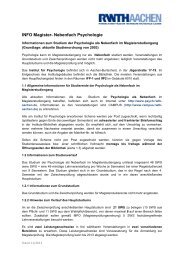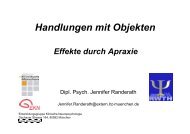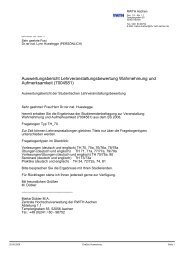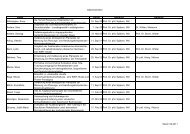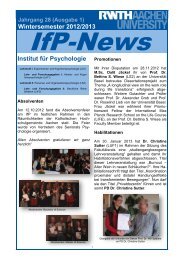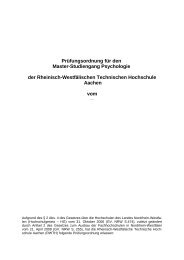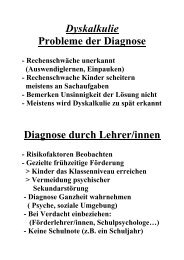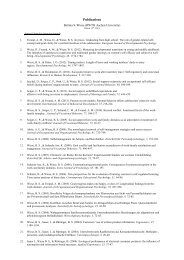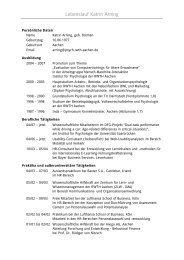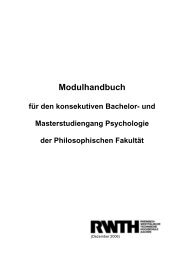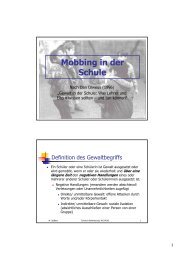Crossmodal Action 1 Crossmodal Action Selection - RWTH Aachen ...
Crossmodal Action 1 Crossmodal Action Selection - RWTH Aachen ...
Crossmodal Action 1 Crossmodal Action Selection - RWTH Aachen ...
Create successful ePaper yourself
Turn your PDF publications into a flip-book with our unique Google optimized e-Paper software.
<strong>Crossmodal</strong> <strong>Action</strong> 4<br />
motor modalities are distinct for the two tasks (e.g., an auditory-manual Task 1 and a visualvocal<br />
Task 2), suggesting that the central response selection stage is basically an amodal<br />
origin to the dual-task costs (e.g., Marois & Ivanoff, 2005; but see Hazeltine, Ruthruff, &<br />
Remington, 2006). More recent models of multitasking extended the central bottleneck model<br />
to account for more complex multitasking situations (e.g., Byrne & Anderson, 2001; Salvucci<br />
& Taatgen, 2008), but the core idea of serial central processing remained untouched.<br />
A major advantage of the PRP paradigm is the possibility of manipulating temporal<br />
task overlap to study mechanisms of multitasking. However, it was argued that the PRP effect<br />
might specifically arise due to the successive stimulus presentation, suggesting strategic serial<br />
response processing to the participants (see Meyer & Kieras, 1997). This possibility might<br />
compromise any generalization to settings where stimuli are not separated by a given time lag,<br />
and thus the PRP paradigm is not suited to finally answer the question of whether response<br />
selection can be accomplished in parallel. Furthermore, the PRP paradigm only captures a<br />
portion of performance costs in multitasking. For example, PRP studies that additionally<br />
included single-task controls demonstrated that RT1 and RT2 in PRP trials are (at any SOA)<br />
longer than the respective single-task RTs (e.g., Herman & Kantowitz, 1970; Hommel, 1998;<br />
Pashler, 1984), suggesting further sources of performance costs in multitasking beyond<br />
central response selection bottlenecks.<br />
By comparison, in the dual-task paradigm dual-task costs are typically assessed by<br />
subtracting RTs in single-task conditions from RTs in dual-task conditions (e.g., Navon &<br />
Miller, 1987). A major advantage of the dual-task paradigm is that the simultaneous<br />
presentation of stimuli in dual-task conditions does not suggest a serial response planning<br />
strategy to the participants. A major drawback, however, is that this procedure does not allow<br />
one to manipulate temporal task overlap, thus limiting the scope regarding the analysis of<br />
underlying mechanisms of multitasking. Additionally, while some portion of the dual-task<br />
costs in the dual-task paradigm might be specifically related to central bottlenecks or central



